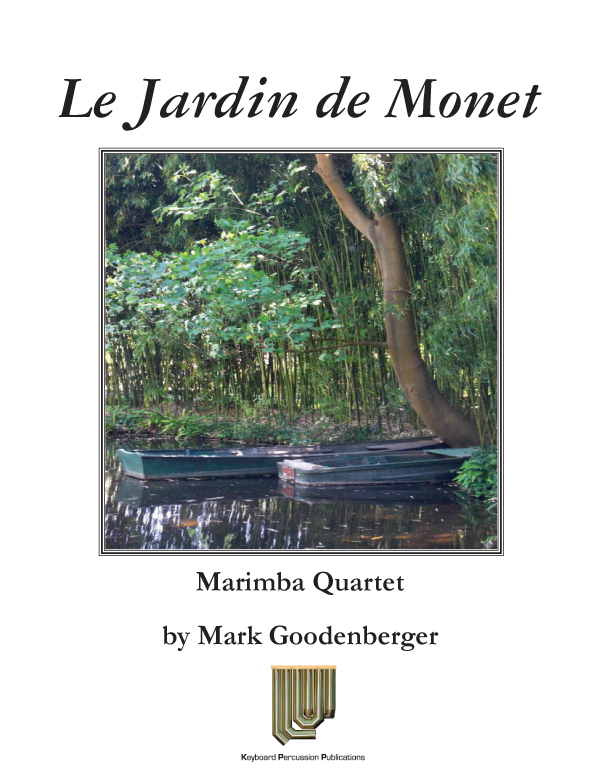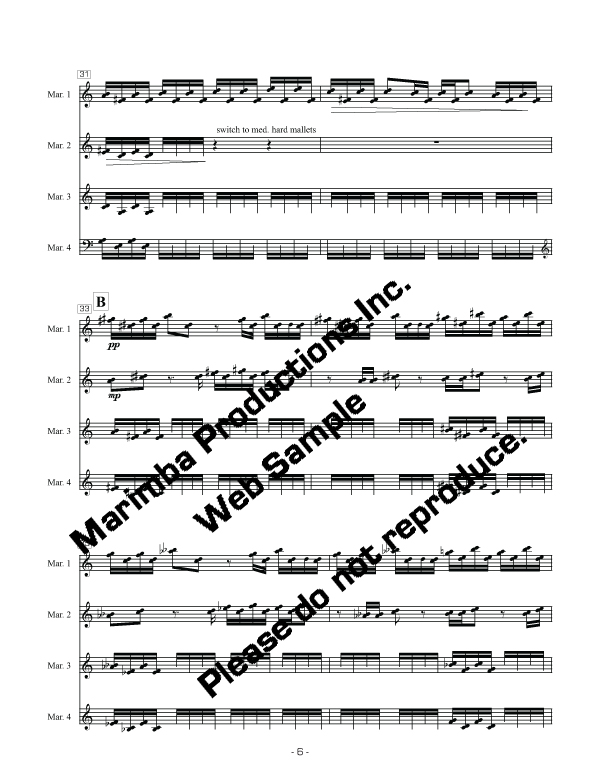This programmatic piece for marimba quartet describes the effect of standing very close to one of Claude Monet’s paintings, and how the interpretation changes as you begin to move back. Inarticulate rhythmic and harmonic density parallel seeing smudges and smears of paint from a very short distance. As the piece progresses, each performer establishes their own identity and personality, just as the image becomes clearer as the observer moves further away.
When I opened “Le Jardin de Monet” I was pleasantly surprised. THis piece seeks to represent the experience of viewing a Money from various perspectives, and as an observer, this is immediately clear. Although the music may appear to be complicated at first glance, Mark Goodenberger has crafted an approachable marimba quartet. SEveral aspects, such as the indication of mallet changes, while not difficult to execute, appear complex in their notation. This piece is exactly what is needed for percussion instructors and professors to introduce variety and epth of musical choice to students without alienating them.
“Le Jardin de Monet” does present some tricky syncopations in a few spots, such as the thrity-second note passages at the end of rehearsal M into rehearsal N; however this section is isolated to the fourth marimba part, making it worthy of consideration for the undergraduate or advanced high school percussion ensemble. At around eight minutes this work will fit perfectly on most percussion or band programs, and due to the repetition of similar shapes and melodic ideas, it should be manageable fo rthe intermediate level four-mallet student.
While I feel this work is perfect for this niche, the instrumentation may be difficult for some smaller percussion programs, which may not have access to two 5-octave marimbas. However, the programmatic nature would make this piece appealing to performers and audience members alike.
-Quintin Mallette, Percussive Notes, July 2019

































